You are using an out of date browser. It may not display this or other websites correctly.
You should upgrade or use an alternative browser.
You should upgrade or use an alternative browser.
First ever pillar and bedding job / Savage 111 Trophy Hunter
- Thread starter PowellSixO
- Start date
 Help Support Long Range Hunting Forum
Help Support Long Range Hunting Forum
I keep my Devcon in the refrigerator in a freezer bag. It seems to last longer.
Good idea. The old hardener that went bad had less volatile aroma than the brand new hardener - by far. Lowering the temperature should help reduce the rate of loss of the volatiles. I'd considered freezing it, but the Devcon container packaging says to not freeze.
Hired Gun
Well-Known Member
HG,
You've got me interested. So is Marine-Tex Gray easier to work with than Devcon Plastic Putty, or approximately the same? Have you settled on Marine-Tex Gray, after having used Devcon in the past?
It looks like Marine-Tex Gray is available in 2 oz packaging? But I don't think the 2 oz kit would be enough for a rifle stock - do you? If it would be, that's convenient and cost-effective since I only bed one rifle stock per year - typically. I read where Marine-Tex has a 2-year shelf life after opened, which is longer than I got out of the Devcon Steel Putty hardener. But shelf life wouldn't matter if 2 oz of Marine-Tex was enough for a single rifle bedding job.
If you've used both and prefer Marine-Tex, I'll probably try it the next time I bed a rifle. But should I buy the 2 oz kit or the 14 oz kit? Thanks.
I would buy the 14 ounce cans. 2 ounces is not near enough. I use 3.5 to 4 ounces per rifle.
Once you get the hang of it Marine Tex it is very easy to work with. I like to apply it with a syringe like this one.

Devcon is not bad to work with either except for the Titanium version. I don't like using that at all. For my customers it's all about quality and using the very best, cost is no object, easy or not materials. I would still use MarineTex if it cost 5 times what it does now. When you look at the specs it is just the best there is. It's harder, more durable and shrinks less than any other material out there that is suitable for bedding material. The only thing I can figure why some people use Devcon at all, is because compared to MarineTex, is it has a high tech name.
Thanks. I'll try Marine-Tex the next time around. Sound like really good material. I fell in love with Devcon, but since Marine-Tex is as easy to handle and apply as Devcon, and it shrinks less, it's the better option.
With regard to Speedy's methods, I went ahead and used G-10 pillars from Brownells on my last rifle bedding job. A McMillan Thumbhole stock for a .338 Lapua Rogue. G-10 exhibit less thermal expansion/contraction according to Speedy. He prefers them. The nice thing about G-10 pillars for me, lacking the gunsmith shop tools, is how much easier they were to cut and finish to final length/shape/angle compared to aluminum pillars. I can drag the G-10 pillars across a sheet of emery cloth on a flat bench surface to reduce their length, and fine tune the length and angle of the contacting surface to match the trigger guard. They cost about 50% more than aluminum pillars, but for ease of use, they're worth it to me. I'll only be using G-10 pillars going forward.
With regard to Speedy's methods, I went ahead and used G-10 pillars from Brownells on my last rifle bedding job. A McMillan Thumbhole stock for a .338 Lapua Rogue. G-10 exhibit less thermal expansion/contraction according to Speedy. He prefers them. The nice thing about G-10 pillars for me, lacking the gunsmith shop tools, is how much easier they were to cut and finish to final length/shape/angle compared to aluminum pillars. I can drag the G-10 pillars across a sheet of emery cloth on a flat bench surface to reduce their length, and fine tune the length and angle of the contacting surface to match the trigger guard. They cost about 50% more than aluminum pillars, but for ease of use, they're worth it to me. I'll only be using G-10 pillars going forward.
If you are ok with a pillar like those G10 pillars, I don't see a reason to even use a pillar. Just fill the hole with bedding epoxy like they used to do.
You think aluminum pillars are better than G10? Or do you use bedding compound to form pillars?
Anyhow, I bed the pillars first, screwed snug against the bottom of the action, with the barreled action centered in the stock. Then relieve the stock to accept the bedding compound wherever I want bedding compound. Then glass bed the action down onto the pillars. This seems simplest to me. Thus my use of the G-10 pillars.
I may some day bed a rifle like Hired Gun - in a single step. But so far I've used this two-step method on the last 3 rifles, and it's the one I'm most comfortable with.
You think aluminum pillars are better than G10? Or do you use bedding compound to form pillars?
I think aluminum pillars are stronger. If stronger makes them better then I think they are better.
I have not formed pillars from bedding compound but that was the original method used by Gale McMillan. I would expect some epoxies used for bedding have a higher compressive strength than those G10 pillars.
I think aluminum pillars are stronger. If stronger makes them better then I think they are better.
I have not formed pillars from bedding compound but that was the original method used by Gale McMillan. I would expect some epoxies used for bedding have a higher compressive strength than those G10 pillars.
I used aluminum pillars twice and G-10 pillars the last time. I'm not concerned about the strength of G-10. I'm certain I'd strip out the action screws before they'll compress after bedding in JB Weld.
Speedy thinks G-10 pillars are better which is why I bought this first set. Now that I've experienced the ease of use, I'll only be using them. Two good reasons - enough for me.
J E Custom
Well-Known Member
I think aluminum pillars are stronger. If stronger makes them better then I think they are better.
I have not formed pillars from bedding compound but that was the original method used by Gale McMillan. I would expect some epoxies used for bedding have a higher compressive strength than those G10 pillars.
+1
I looked into the G 10 and did a comparison to Aluminum and this is what I found = The G 10 has a tensile strength of 45,000 psi, the lowest grade of Aluminum also has a tensile strength of 40,000
psi so if this is what you are using then ether one will do about the same in compression. "But" if you use the 7075 (I like to buy the Anodized) it has a tensile of 83,000 psi making the compressive strength more than double the G 10.
I don't think you will compress the G 10 when you first torque the action, but I worry about what it does over time. I know bedding compound will compress over time, thus the reason for pillar bedding.
Also while compression testing, the G 10 turned to powder when its yield strength was reached and instead of yielding, It totally failed (I doubt that would happen with the load placed on it in a bedding job but I know the Aluminum wont.
So why not use a material that will not compress over time and risk loosing accuracy. with the 7075
I have not seen any loss of torque for years. So that would be my recommendation for pillar material. Also as I have stated many times Don't use any compounds that are not designed for bedding and with good pillars the bedding job should last for a life time.
There is a saying that fits this process well. If you don't have the time to do it right the first time. when are you going to find the time to fix it later.
Again, this is just my opinion
J E CUSTOM
+1
I looked into the G 10 and did a comparison to Aluminum and this is what I found = The G 10 has a tensile strength of 45,000 psi, the lowest grade of Aluminum also has a tensile strength of 40,000 psi so if this is what you are using then ether one will do about the same in compression. "But" if you use the 7075 (I like to buy the Anodized) it has a tensile of 83,000 psi making the compressive strength more than double the G 10.
Again, this is just my opinion
J E CUSTOM
J E,
Tensile strength and compressive strength are two different characteristics of materials, very much unrelated to one another in the science of strength of materials. I haven't researched the two separate values with respect to G-10 and aluminum, but they don't necessarily have any comparable meaning or relationship. Concrete has good compressive strength. Its tensile strength is useless.
Best is defined in many different ways. Strong enough is enough, once that concern has been met. Speedy's preference for G-10 is its lesser thermal expansion and contraction compared to aluminum. So if G-10 is strong enough, yet expands and contracts less - maybe G-10 IS actually taking the time to do it right the first time? It's not for sake of saving money or time. G-10 is more expensive. And the time allotted is identical.
The article Hired Gun posted the link to was dated April 2016, and Speedy is still using and prefers G-10 pillars. The prior article I'd read was dated years earlier. Are G-10 pillars going to compress/crush/collapse when encased in bedding compound, under a maximum 60 inch-lbs of action screw torque? Recognizing that the load is equally spread out across the surface area of the face of the action and the surface area of the one-piece trigger guard, rather than a concentrated point loading? We're not hitting them with a sludge hammer or shock loading with an impact wrench. 60 inch-lbs of torque - maximum.
I've used G-10 pillars one time in my life. I'm an engineer, not a gunsmith, but Speedy doesn't use anything else. "Best" and "finding the time to do it right the first time" are most often a by-product of multiple considerations - rather than a single determining factor. Nothing is added to the functional value of a pillar by using a pillar material with 4 times the required compressive strength - if the pillar material has other less desirable functional qualities.
Don't want you to get the idea you hurt my feelings or ego in any way, and I'm not carrying a chip on my shoulder. If it weren't for differing opinions, planet earth might not rotate. I'm expressing the considerations I evaluated prior to using G-10 pillars, which included more than strictly compressive strength. Honestly, the compressive strength concern was dismissed out-of-hand solely due to a well known gunsmith using and recommending G-10 pillars himself, and instructing gunsmithing students to use G-10 pillars during his classroom instruction. I'm not doing anything that hasn't already survived the test of time in Speedy's gunsmith business.
Last edited:
PowellSixO
Well-Known Member
Well I made it to the gun range for a quick trip on Friday. I've got to say that the new stock and bed job, did make a difference in how my rifle shoots. I didn't shoot any 100 yard groups, just because I was pressed for time. I basically shot 7 shots at 200 yards to see how I was grouping, then I zeroed my rifle at 200. And from there I shot at 300, 400, and 500 just to find my drops. I verified that my chronograph was still on. The wind was blowing pretty good (5-10 mph), while I was shooting, so I think I can do better the next time out. Here is a 4" group at 500 yards (3 shots), my 7 shots at 200 yards, a picture of my chronograph, and a picture of the rifle.
500 yards, 3 shots, 4" group.
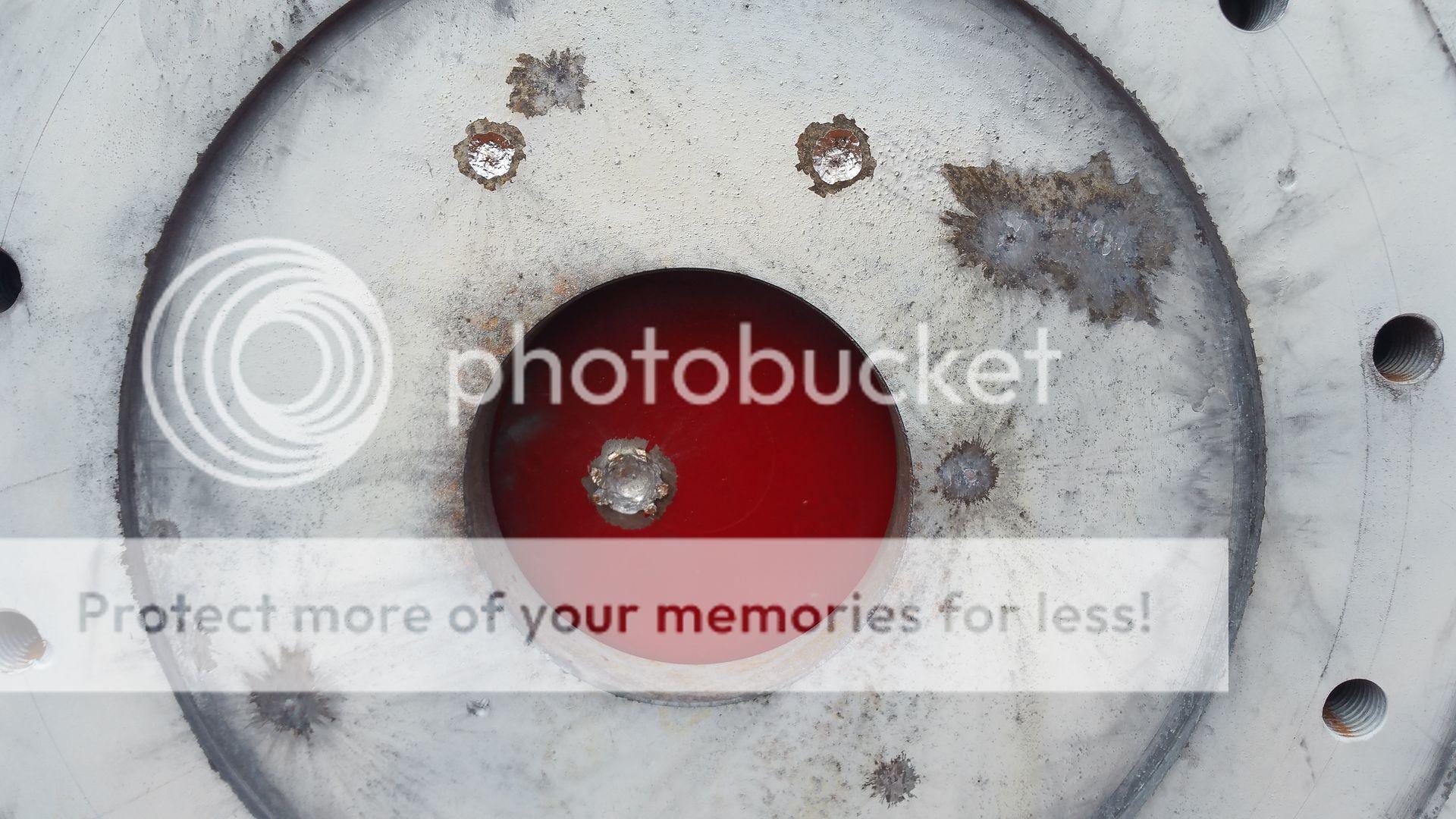
200 yard grouping, right at the size of a quarter.
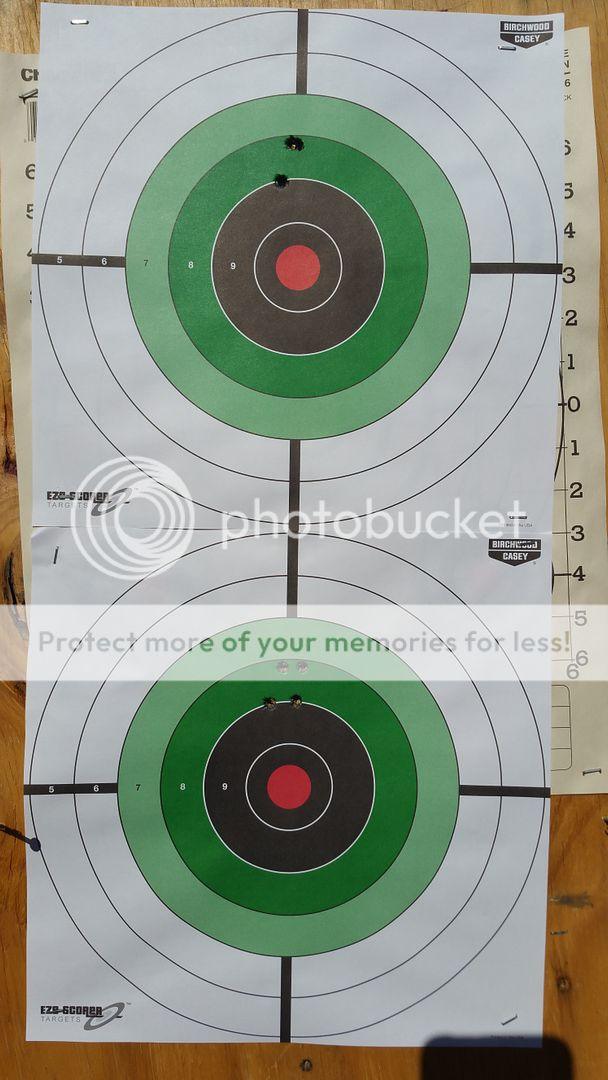
The rifle.
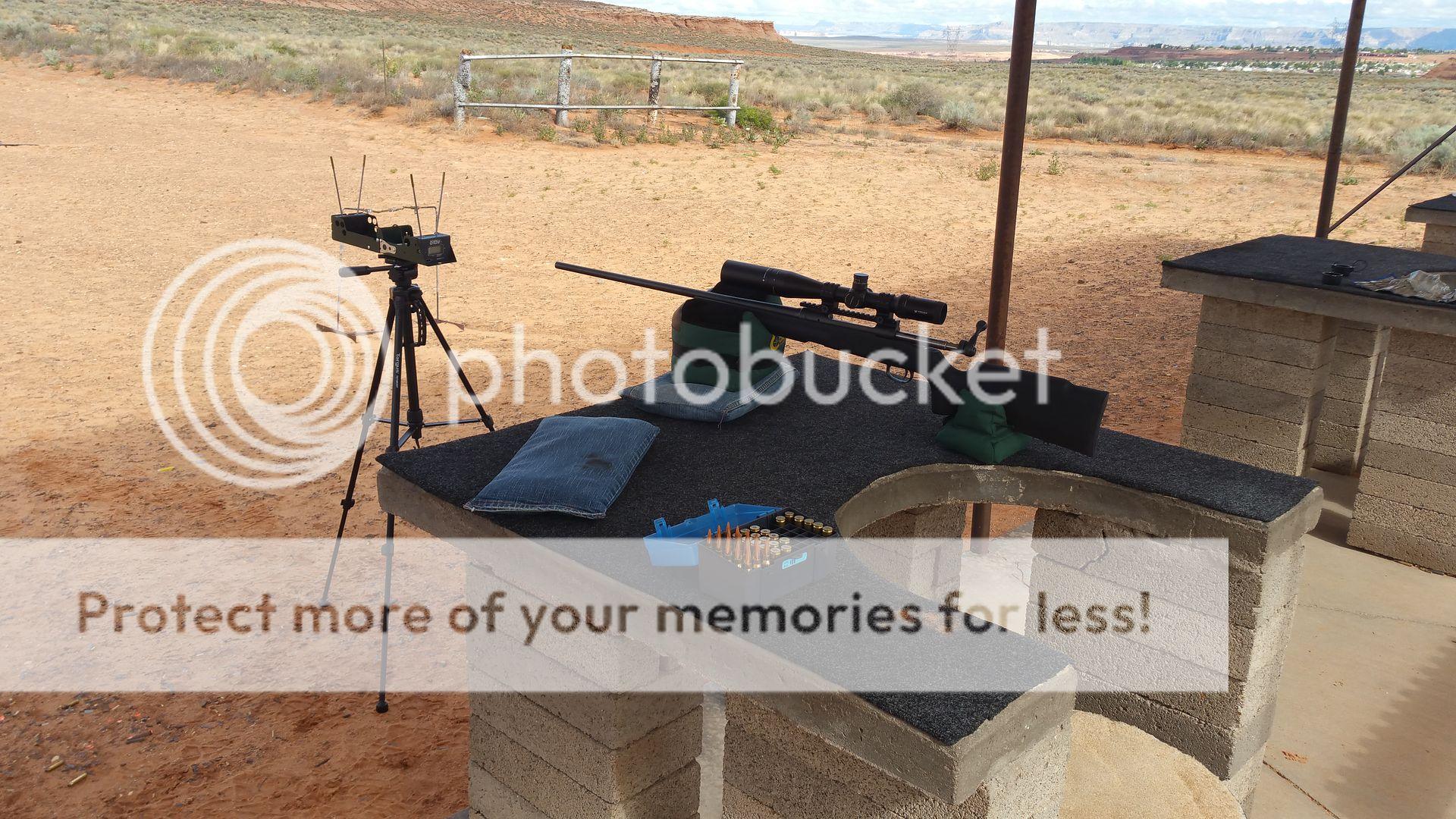
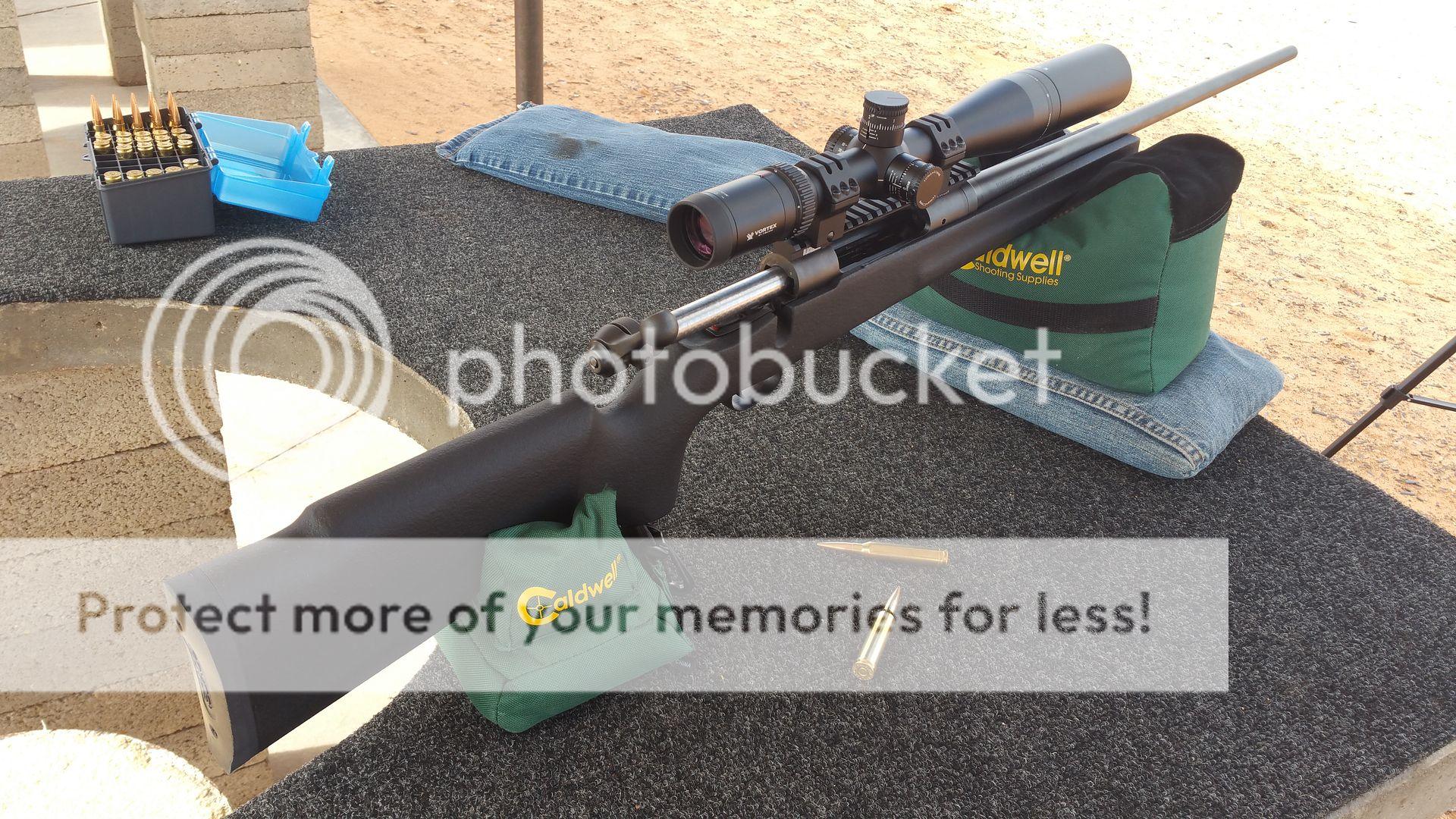
Chronograph, at 3050 fps average (high and low reading).
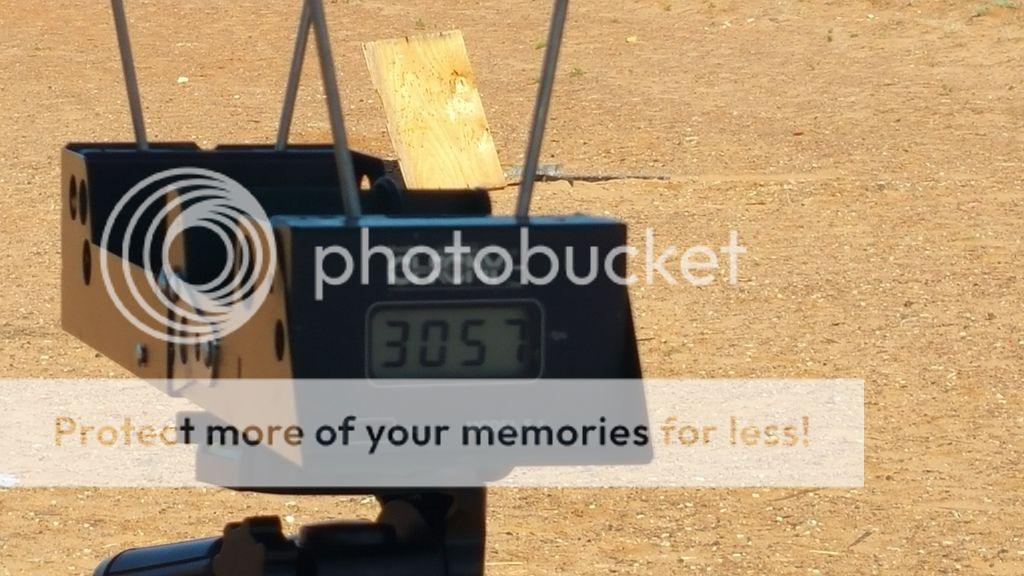
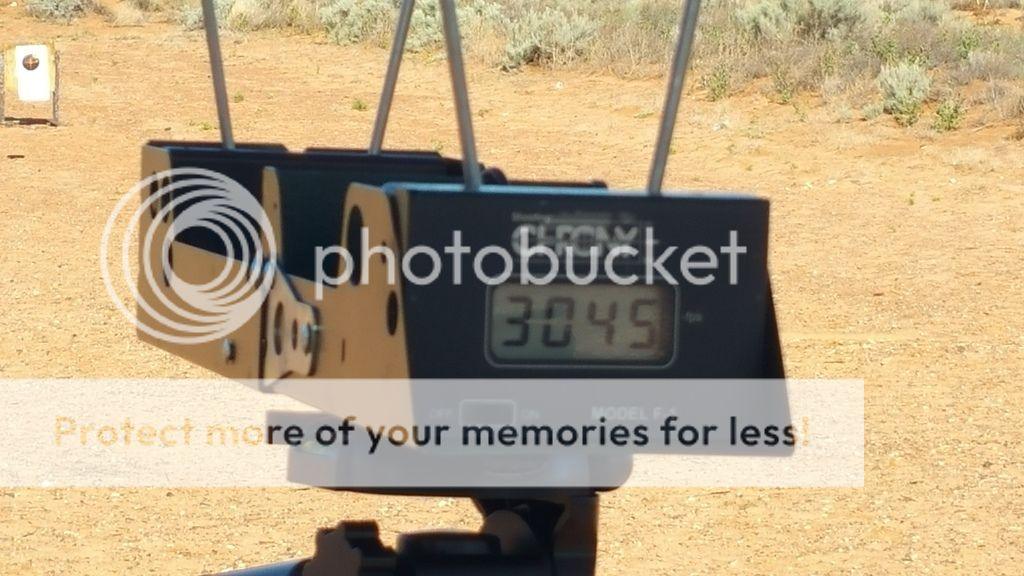
500 yards, 3 shots, 4" group.

200 yard grouping, right at the size of a quarter.

The rifle.


Chronograph, at 3050 fps average (high and low reading).


J E Custom
Well-Known Member
J E,
Tensile strength and compressive strength are two different characteristics of materials, very much unrelated to one another in the science of strength of materials. I haven't researched the two separate values with respect to G-10 and aluminum, but they don't necessarily have any comparable meaning or relationship. Concrete has good compressive strength. Its tensile strength is useless.
Best is defined in many different ways. Strong enough is enough, once that concern has been met. Speedy's preference for G-10 is its lesser thermal expansion and contraction compared to aluminum. So if G-10 is strong enough, yet expands and contracts less - maybe G-10 IS actually taking the time to do it right the first time? It's not for sake of saving money or time. G-10 is more expensive. And the time allotted is identical.
The article Hired Gun posted the link to was dated April 2016, and Speedy is still using and prefers G-10 pillars. The prior article I'd read was dated years earlier. Are G-10 pillars going to compress/crush/collapse when encased in bedding compound, under a maximum 60 inch-lbs of action screw torque? Recognizing that the load is equally spread out across the surface area of the face of the action and the surface area of the one-piece trigger guard, rather than a concentrated point loading? We're not hitting them with a sludge hammer or shock loading with an impact wrench. 60 inch-lbs of torque - maximum.
I've used G-10 pillars one time in my life. I'm an engineer, not a gunsmith, but Speedy doesn't use anything else. "Best" and "finding the time to do it right the first time" are most often a by-product of multiple considerations - rather than a single determining factor. Nothing is added to the functional value of a pillar by using a pillar material with 4 times the required compressive strength - if the pillar material has other less desirable functional qualities.
Don't want you to get the idea you hurt my feelings or ego in any way, and I'm not carrying a chip on my shoulder. If it weren't for differing opinions, planet earth might not rotate. I'm expressing the considerations I evaluated prior to using G-10 pillars, which included more than strictly compressive strength. Honestly, the compressive strength concern was dismissed out-of-hand solely due to a well known gunsmith using and recommending G-10 pillars himself, and instructing gunsmithing students to use G-10 pillars during his classroom instruction. I'm not doing anything that hasn't already survived the test of time in Speedy's gunsmith business.
I totally agree with all you said and I am in no way offended,this a discussion and we are discussing different ways and procedures to do a job. there are always going to be differences of opinions and I just expressed mine. I also understand the difference in compressive and tensile, but the manufactures did not furnish compressive values, all they said was that G 10 would fail catastrophically (Just like concrete)and turn to powder when the compressive yield is reached and that is the main reason I chose to use a material that does not totally fail when loaded to yield . And ultimately that is what we are doing to the pillars (Compressing them). Armed with Only tensile strength numbers for the G 10 the only other comparison was to use the tensile strength to compare with other products. (As you said there is a relationship with the tinsel and compressive numbers so that Is all I had to compare with.
I never question anyone's methods or choice of materials as long as I don't think they are dangerous. I only make recommendations based on my experiences and likes. I can say, that I base my recommendations on more that just what I am told or think is the only way to go because I normally research an issue and go with the best option at the time. and if someone comes up with a better solution I will change if all indications are that it is better. (I don't believe anything I hear until I prove to myself that it has merit or is the best way to do something).
I don't rely on the bedding to help with the action screw torque at all because I want the pillars to
manage the torque and the bedding to hold the action in the exact same place with the exact same
contact surface so accuracy is very predictable and consistent. (The main reason for a totally stress free bedding job). I also don't know what the compressive shock is when a rifle is fired, But I would have to think it was more than 60 inch pounds because of the recoil vectoring it's force in many directions.
I will be the first to admit over engineering most things, but I believe in a margin of safety and durability so my choices are generally based on that criteria. and I normally use materials that are better than I need, not just good enough to do the job. There is no question that G10 will do the job, but in my opinion there are better materials that cost no more and give me that margin/edge
that I look for. There are a lot of things that I wouldn't do/use that are used every day with good results but I just want to be very comfortable with what ever I do or use that it is the best I can do.
Thanks for your comments and I hope this helps explain where I am coming from In the way I do things. That is good enough, or that will work, is not in my vocabulary. I want it better than It needs to be. (Just me)
J E CUSTOM
